GIRL You Are GLOWING! GIRL You Are RADIOACTIVE! GIRL It's FATAL!
GIRL you are GLOWING! GIRL you are RADIOACTIVE! GIRL it's FATAL!
More Posts from Rhincodon-cynocephalus and Others

The Quizzer Book of Knowledge: Nature. Written and edited by George Beal. 1978.
Internet Archive





Starry Seas part 2 for Redbubble!
(part 1)
(part 3)
No one:
Seth:



The thylacine has long been an icon of human-caused extinction. In the 1800s and early 1900s, European colonizers in Tasmania wrongly blamed the dog-sized, tiger-striped, carnivorous marsupial for killing their sheep and chickens. The settlers slaughtered thylacines by the thousands, exchanging the animals’ skins for a government bounty. The last known thylacine spent its days pacing a zoo cage in Hobart, Tasmania, and died of neglect in 1936.
Now the wolflike creature—also known as the Tasmanian tiger—is poised to become an emblem of de-extinction, an initiative that seeks to create new versions of lost species. Colossal Biosciences, a Texas-based de-extinction company that made headlines last September when it revealed that it planned to bring back the woolly mammoth, announced today that its second project will be resurrecting the thylacine.
Australian scientists have been hoping since 1999 to use emerging genetic technologies to try to bring the thylacine back from the dead. When the species went extinct, Tasmania lost its top predator. In theory, reintroducing proxy thylacines could help restore balance to Tasmania’s remaining forests by picking off sick or weak animals and controlling overabundant herbivores such as wallabies and kangaroos, some researchers say. But early attempts at cloning the animal from museum specimens’ DNA failed, and the effort has not attracted significant funding—until this year.
Continue Reading.
The ancient Egyptians: And they were dualistic counterparts Herman te Velde, writing papers about Set in the 1960s: Oh my god they were dualistic counterparts






come enjoy the warmth and coziness of this forest hut
Rare footage of an Eastern black rhinoceros [ Diceros bicornis michaeli ] and her calf, taken in the 1950s in Amboseli National Park, Kenya. The rhino, known as “Gertie”, had a horn that measured nearly 4ft in length before breaking off naturally sometime in the 1960s, possibly during a fight with another rhino.
The demand for rhinoceros horn has made sights such as this exceedingly rare. As of 1992, only 2 rhinos were left in Amboseli National Park, where the animal is now considered locally extinct, while the subspecies as a whole is listed as critically endangered.
[ video source ]
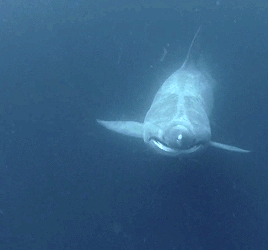
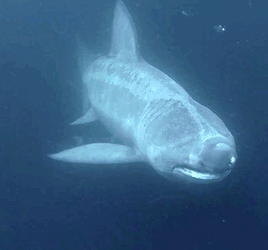
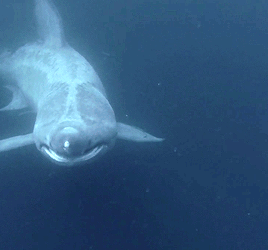
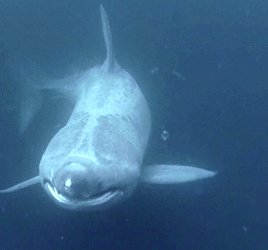
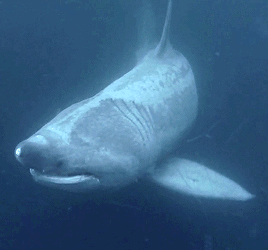
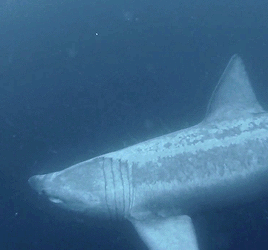
Rare sighting of basking shark in deeper water with its mouth closed.

Album of Sharks, Tom McGowen, 1977. Illustrated by Rod Ruth.
-
 shadow-lurkian reblogged this · 1 month ago
shadow-lurkian reblogged this · 1 month ago -
 shadow-lurkian liked this · 1 month ago
shadow-lurkian liked this · 1 month ago -
 acefandom103 reblogged this · 1 month ago
acefandom103 reblogged this · 1 month ago -
 acefandom103 liked this · 1 month ago
acefandom103 liked this · 1 month ago -
 theriseofplut0 liked this · 1 month ago
theriseofplut0 liked this · 1 month ago -
 xboxdip-e reblogged this · 1 month ago
xboxdip-e reblogged this · 1 month ago -
 doctorkatmd liked this · 1 month ago
doctorkatmd liked this · 1 month ago -
 universeusurper reblogged this · 1 month ago
universeusurper reblogged this · 1 month ago -
 aestheticvoyagersworld reblogged this · 1 month ago
aestheticvoyagersworld reblogged this · 1 month ago -
 aestheticvoyagersworld liked this · 1 month ago
aestheticvoyagersworld liked this · 1 month ago -
 charliesginger reblogged this · 1 month ago
charliesginger reblogged this · 1 month ago -
 anoncillo reblogged this · 1 month ago
anoncillo reblogged this · 1 month ago -
 introvert-in-hiding reblogged this · 1 month ago
introvert-in-hiding reblogged this · 1 month ago -
 theswisscheeserag reblogged this · 1 month ago
theswisscheeserag reblogged this · 1 month ago -
 theswisscheeserag liked this · 1 month ago
theswisscheeserag liked this · 1 month ago -
 readingfangirl3 liked this · 1 month ago
readingfangirl3 liked this · 1 month ago -
 ouwi-ouwi-baguette liked this · 1 month ago
ouwi-ouwi-baguette liked this · 1 month ago -
 ghostlynic liked this · 1 month ago
ghostlynic liked this · 1 month ago -
 sampletext-01 liked this · 1 month ago
sampletext-01 liked this · 1 month ago -
 unclassyfied404 liked this · 1 month ago
unclassyfied404 liked this · 1 month ago -
 80slovemail liked this · 1 month ago
80slovemail liked this · 1 month ago -
 justareallyboredfangirl reblogged this · 1 month ago
justareallyboredfangirl reblogged this · 1 month ago -
 shadowlurkerbug liked this · 1 month ago
shadowlurkerbug liked this · 1 month ago -
 mfdook reblogged this · 1 month ago
mfdook reblogged this · 1 month ago -
 queenspiderr15 liked this · 1 month ago
queenspiderr15 liked this · 1 month ago -
 kid-in-th3-k0rn3r liked this · 1 month ago
kid-in-th3-k0rn3r liked this · 1 month ago -
 touchofhemlocktea reblogged this · 1 month ago
touchofhemlocktea reblogged this · 1 month ago -
 touchofhemlocktea liked this · 1 month ago
touchofhemlocktea liked this · 1 month ago -
 olive-garden-hoe liked this · 1 month ago
olive-garden-hoe liked this · 1 month ago -
 sophisticated-crow reblogged this · 1 month ago
sophisticated-crow reblogged this · 1 month ago -
 sophisticated-crow liked this · 1 month ago
sophisticated-crow liked this · 1 month ago -
 wildthing120717 liked this · 1 month ago
wildthing120717 liked this · 1 month ago -
 little---furnace reblogged this · 1 month ago
little---furnace reblogged this · 1 month ago -
 little---furnace liked this · 1 month ago
little---furnace liked this · 1 month ago -
 dumb-bitch-named-ash reblogged this · 1 month ago
dumb-bitch-named-ash reblogged this · 1 month ago -
 dumb-bitch-named-ash liked this · 1 month ago
dumb-bitch-named-ash liked this · 1 month ago -
 mostlyrubbish reblogged this · 1 month ago
mostlyrubbish reblogged this · 1 month ago -
 mostlyrubbish liked this · 1 month ago
mostlyrubbish liked this · 1 month ago -
 ember-not-amber reblogged this · 1 month ago
ember-not-amber reblogged this · 1 month ago -
 sillylilshithead reblogged this · 1 month ago
sillylilshithead reblogged this · 1 month ago -
 ember-not-amber liked this · 1 month ago
ember-not-amber liked this · 1 month ago -
 cin-the-moth reblogged this · 1 month ago
cin-the-moth reblogged this · 1 month ago -
 chaoticeldritchentity liked this · 1 month ago
chaoticeldritchentity liked this · 1 month ago -
 all-hate-disney reblogged this · 1 month ago
all-hate-disney reblogged this · 1 month ago -
 chaoticsh3p reblogged this · 1 month ago
chaoticsh3p reblogged this · 1 month ago -
 chaoticsh3p liked this · 1 month ago
chaoticsh3p liked this · 1 month ago -
 mira-mira-0n-the-wall reblogged this · 1 month ago
mira-mira-0n-the-wall reblogged this · 1 month ago -
 mira-mira-0n-the-wall liked this · 1 month ago
mira-mira-0n-the-wall liked this · 1 month ago -
 b-l-o-o-d-y reblogged this · 1 month ago
b-l-o-o-d-y reblogged this · 1 month ago

Thylacine archive blog: @moonlight-wolf-archive
204 posts